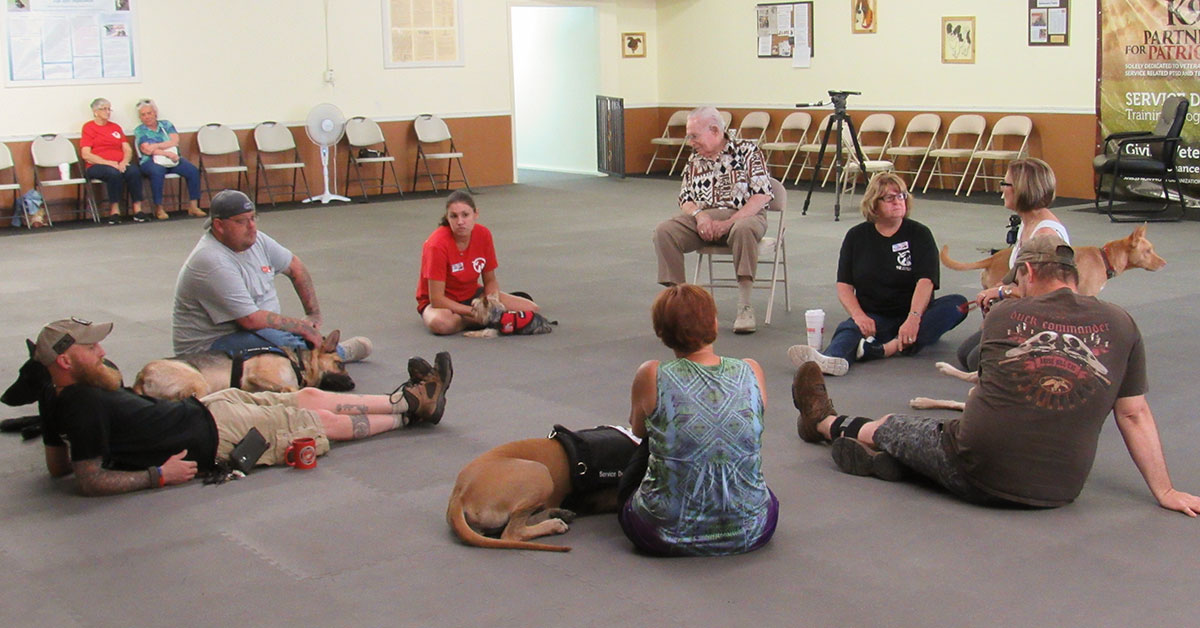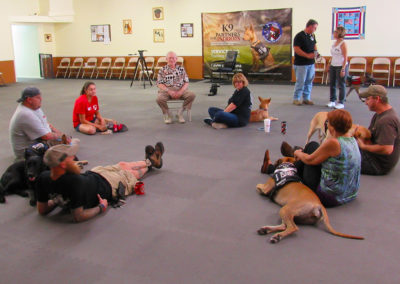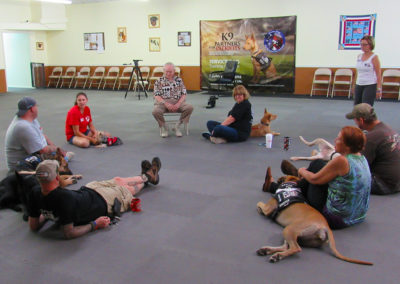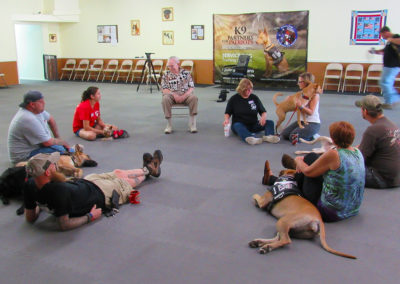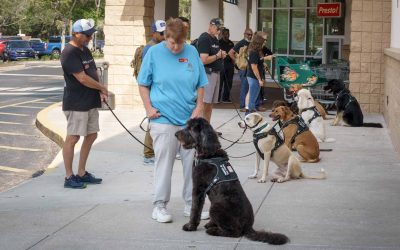As the first day of training for the Advanced Level Class geared up we received a visit from a WWII Veteran John and his wife Evelyn. John and Evelyn are the parents of our grant coordinator, Rhonda Hicks. John and his wife stayed to observe our program veterans and their K9’s train. Afterwards, many of our program veterans made it a point to introduce themselves and express their gratitude for his service.
It was an honor to have John with us today.
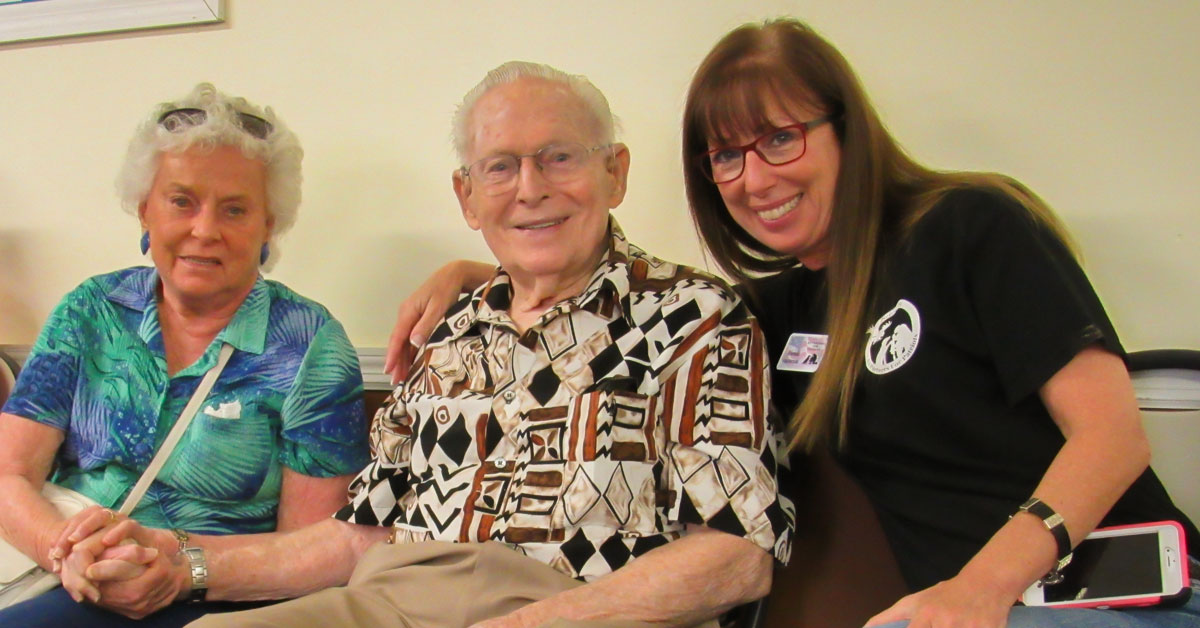
Some WWII Facts
As of January 1, 2014, there were more than 1 million living WWII veterans, most of them are in their nineties. By 2036, there will probably be no more living WWII vets. In 1944, the average soldier was 26 years old with sailors and marines generally being younger.

